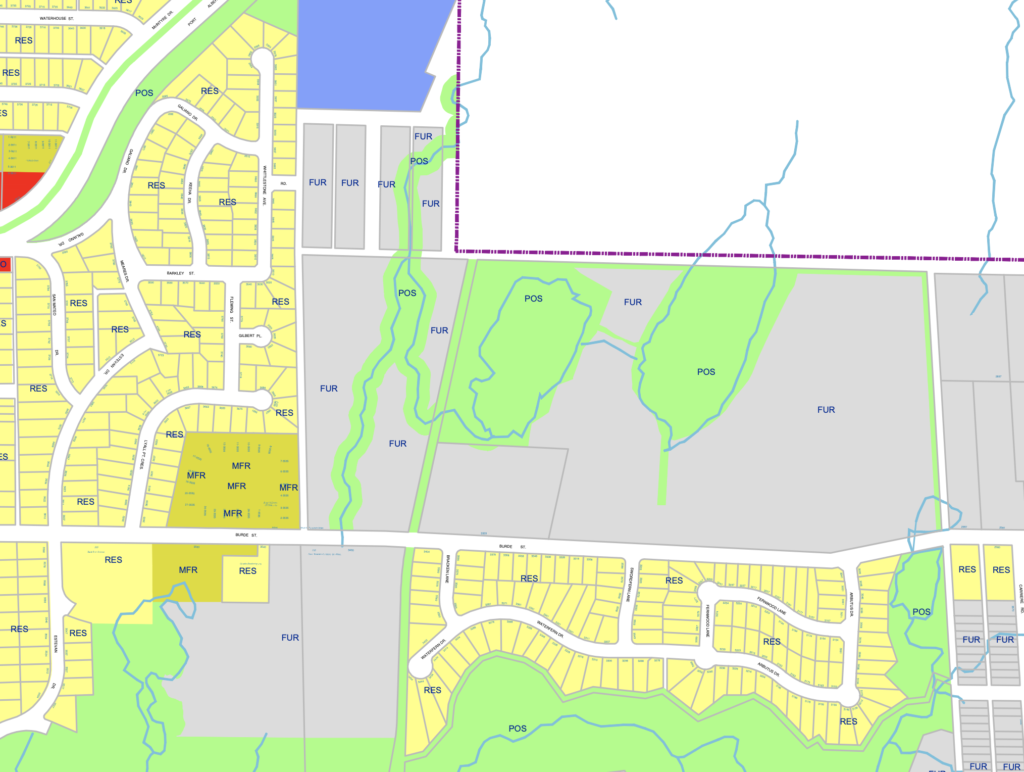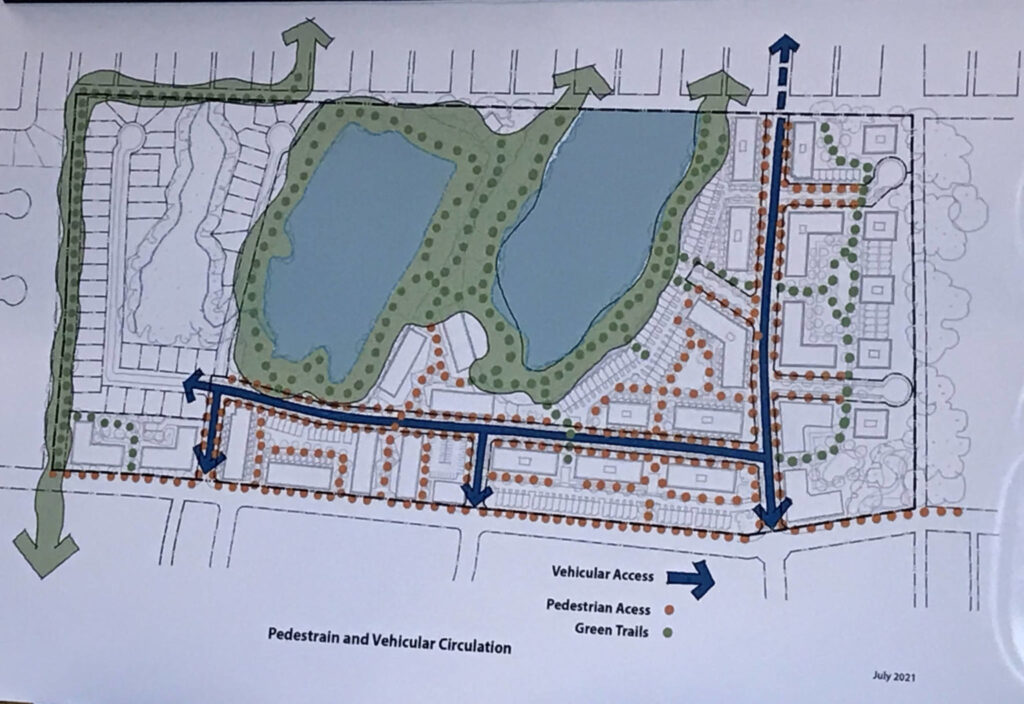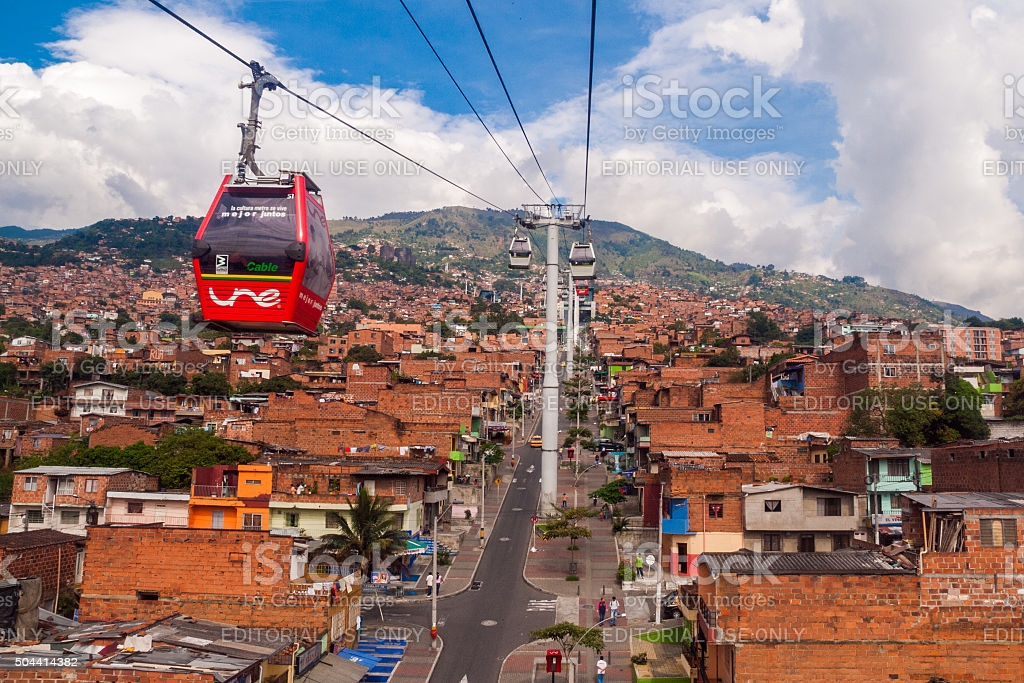The Series continues
This is the 3rd in a series of posts on these properties.
- San Group’s Pacific Mayfair Estates takes over Beaver Ponds – Maybe They Should Donate The Land
- San Group Beaver Pond Development – The Environmental Impact
- This Post.
There appears to be considerable concern building around this development particularly around the loss of beavers and other wildlife.
Is this how a City is built?
The “TL;DR:” (Too Long, Didn’t Read) version of everything below is essentially this:
- This development is a continuation of a trend where natural spaces attract, and then are destroyed by, residential development.
- City Staff is going to have questions and concerns for San Group straight out of the gate based on their submitted plan.
- Is this a modern development, is this sustainable for the 21st century, is this innovative?
- Urban sprawl on the fringe of cities is very expensive for City Taxpayers. There are much better places to invest $1B dollars for the benefit of Port Alberni residents, nature and taxpayers.
Thanks to Sandy in the comments for requesting a quick summary!
In this post I’ll try to outline some advantages and disadvantages to the type, placement, and impact of the announced $1 Billion investment on Port Alberni socially, economically and as it relates to planning and building a City.
If you’re wondering about the environmental aspect specifically, check out the previous post on the subject.
City Planning – Back to the OCP
The Official Community Plan is the most important document in the City. It lays out how land is planned to be used. So let’s look at how the Beaver Ponds are planned from the updated Land Use Map.

The Burde Street and Estevan Dr areas are primarily residential (yellow), the areas in question with San Group are designated “Future Residential” or “Parks and Open Spaces”, what does that mean? This is what the OCP says (emphasis added):
[FUR] – Identifies areas that will accommodate future residential growth at a low density for up to 20 years. Lands with this designation will require as a condition of development, the preparation of a neighbourhood plan that identifies how development will occur in a planned and sustainable manner. This designation may include some non-residential land uses.
[POS] – Identifies areas intended for community recreational activities and/or preserved because of environmental significance
The OCP is created by a community (not a specific city council) for a community. This OCP was created in 2007 and it was a good one for the time but is also now starting to show its age. That is why it is being updated very soon. Be a part of that process. I have more to say about that at the end of this blog post.
Residential Development “at a low density”?
The suggestion in the OCP for “low density” residential development seems appropriate. Not too much impact, not as much as a high density development with all the other pressures that come with it.
However, low density does not mean low impact.
Did you know that natural, forested, and especially lake areas tends to attract low density residential development? That might seem obvious. Here’s a very recent study from the journal Land Use Policy on that issue and the impact it has.
The study states (emphasis added):
Due to its large footprint, this type of [residential] development poses considerable threats to biodiversity through habitat alteration, disturbance to ecological and biotic processes, and direct disturbance by humans. Of particular concern is that rates of residential development are highest in areas of significant ecological value.
Natural amenities and low-density residential development: Magnitude and spatial scale of influences, Land Use Policy, Volume 102, 2021, 105285, ISSN 0264-8377,
https://doi.org/10.1016/j.landusepol.2021.105285
(https://www.sciencedirect.com/science/article/pii/S0264837721000090)
So, ironically, the last 50 years of housing development has shown us that the thing that attracts residential development, lakes, rivers, forests, is the very thing that destroys those natural landscapes. It truly is, paving paradise to put up a parking lot, or residential tower.
Notice the similarity in language between this study of areas with “significant ecological value” and the OCP which identifies Parks and Open Spaces as places “preserved because of environmental significance“
This literature would support a new view today for the OCP and Land Use Planning that is perhaps different from 2007 and decades before:
Namely that, directly surrounding an area of “environmental significance” with future residential planned landscape is a contradiction in purpose.
Neighbourhood Planning
San Group has the obligation to provide a neighbourhood plan if it wants to change the land use defined in the OCP from Future Residential to Residential. It appears to have begun to meet that requirement with its submissions to the City last week and announced drawings and concepts. The picture below seems to form part of that initial plan.

However, that does not mean the City must accept the plan as is.
The first hurdle for any developer is City staff through the Planning Department which has the right, and responsibility, to evaluate these plans to ensure they generally conform with the expectations of the City, the direction from the OCP, and Council, etc. City staff will make recommendations, and generally work with the proponent before giving preliminary approval so it can be sent to the Advisory Planning Commission.
In this first step of working with the Planning Department, the City often makes clear any red flags that it might see that might require major modifications to the plan. So what might be some red flags?
- The Log Train Trail — Turned into a Road and re-routed? Maybe not.
- An unknown number of high rise residential buildings on the outskirts of town? Maybe not.
- Sterilizing the Beaver Ponds, eradicating the beavers and other unique wildlife, and paving over salmon bearing Wolf Creek? Maybe not.
Those are the most obvious red flags I see and would hope and anticipate the Planning Department to push back on.
By the same token there are portions of the plan that the Planning Department is likely to approve of:
- San Group has indicated they have already completed some environmental assessments, traffic studies and other preliminary work. This is important for them to move the issue forward. The City would need to look at that work. City Staff has the authority to ask that more preliminary work and study be done.
- San Group has said they have hired a consultant to run a public consultation process. The City will likely work with the consultant to facilitate that public consultation and ensure it is done to a standard the City is satisfied with. City Staff has the authority to ask that more or different public consultation be done.
The Planning department of a City can push away a developer and reject a proposal out of hand, but its real purpose, unless a proposal is completely off the wall or illegal, is to work with a developer and help to move a project forward in an objective and fair manner.
Planning and Sustainability
This is another phrase mentioned in the OCP. So what is good “planning and sustainability” in a City the size of Port Alberni in the 21st century? How is a project or development “Sustainable”? Are they talking economic? social? environmental? Surely all of these definitions will have changed over the decades.
So what are some examples or guidelines in the world today that might inform us about what is good “planning and sustainability” for the 21st century.
Consider this 2015 document from the World Economic Forum called “Top 10 Urban Innovations”
This focuses on examples from very large cities like Vancouver, New York or Melbourne… but we can still apply those lessons to small cities like Port Alberni.
Consider the 1st innovation, (Digitally) Re-Programmable Spaces:
City centres struggled to adapt to the heavy, invasive technologies of the 20th century but can more easily host the clean, knowledge-based and lightweight industry and digital technologies of today. Cities have started to look at reprogramming their space to get more from less: Vancouver has reduced its allowable urban footprint; Glasgow has moved from a policy of expansion to concentration; New York has been incrementally repurposing asphalt to expand footpaths and open space;
Certainly Port Alberni has struggled since the transition from reliance on heavy industry began 40 years ago and is just now emerging into a new world. So does this San Group development follow these kinds of successful ideas?
- Is this planned development “lightweight”?
- Does it “reprogram” existing space in Port Alberni to get more from less?
- Are we moving from “a policy of expansion to concentration”?
- Are we “incrementally repurposing asphalt to expand footpaths and open space”?
Or how about Innovation #4 “Augmented Humans: The Next Generation of Mobility”
Improved safety for pedestrians and non-motorized transportation leads to greater adoption of public transport, reduced congestion and pollution, better health and commutes that are quicker (bicycles are, on average,
40% faster during peak hours), more predictable and less expensive. Small investments to encourage cycling can have a large payout, as high as 35:1 according to a recent UK government study1. Such relatively low-cost solutions include separate bike lanes, bike-sharing schemes, re- phasing traffic lights to fit the speed of bikes and planting trees along the side of roads to slow traffic.
Does this development support cycling and other human modes of transportation? Does it make it easier or harder?
Or how about my very favourite innovation from this list, number 8, “Medellin Revisited: Infrastructure for Social Integration”
In 1992, Medellin, Colombia, was considered one of
the most dangerous cities in the world. Today, it is seen
as a laboratory of progressive architectural and urban interventions… Whereas urban development projects often target specific solutions to physical problems, Medellin opted for a different strategy, using architecture and urbanism as tools for social integration.Projects such as the España Library Park and the city’s elevated cable car as a mode of public transportation have been presented as the key symbols of a process that has led to the city’s spatial, social, economic and cultural transformation – connecting the city’s low-income residents and communities with its wealthier commercial centre.
Here’s a picture of that cable car, in the middle of a bustling City!

This is not to suggest that Port Alberni needs a cable car connecting the Harbour Quay, 3rd Avenue, and Redford Heights… though that would be very cool… but the real question is, is the San Group property innovative? Does it present something exciting and beneficial to the community that will move it forward on many different fronts?
Beyond electric cars and energy efficient housing (which today should be considered a minimum, not an innovation), does this project move the City forward to an innovative and economically, socially, and environmentally sustainable future?
Does Urban Sprawl lead to Childhood Obesity?
Does urban sprawl, like we have started to see occur in Port Alberni and is now made most obvious by the San Group development, promote childhood obesity?
There are a number of studies that say it does and some that don’t. This review of the available literature in 2020, “could not identify a clear association between urban sprawl and childhood obesity”. Interestingly, all of the literature they found on the topic was from the USA and Canada.
They do come across this interesting finding though:
We found that the association between urban sprawl and childhood obesity varied by family socio-economic status. For example, the association between urban sprawl and obesity was negative among children from high-income families and positive among their counterparts from low-income families.
This raises questions for me.
- Will this development benefit both low-income and high-income families?
- What schools and amenities will families in this development use?
- How would this large influx of population on the outskirts of the City potentially affect other neighbourhoods? Would it draw people away? Would it cause a shift in socio-economic conditions in one or more parts of the City?
Raising Taxes through Bad (Sprawling) Development
The number one topic on the minds of every municipal politician and city resident is very often how much property tax a city can, or should, collect, and how that property tax is used.
A great many studies have shown that if you want to get the most out of your City tax dollars, building subdivisions on the outskirts of town is almost always the worst way to do it. This kind of sprawl is expensive for municipalities to maintain (think roads, sewers, sidewalks, light standards, water mains and storm drains) and also costly for residents (longer distances to amenities, less access to public transport, more exposed to environmental impacts (ie. wildfires, floods, etc).
The study generally agrees with the reviewed literature that urban sprawl tends to increase per-capita spending by a local government. It also indicates a role for state (or in our case provincial) regulation of the issue.
Paulsen (2014) suggests that states with a substantial role in the planning process have higher levels of inï¬ll development, helping to stem inefï¬cient development on the urban fringe. Such that statewide planning or local urban containment policies are effective in restraining growth on the urban fringe, this analysis suggests that local government expenditures are likely to be reduced as a result.
So a question I have is where would $1 Billion in investment be better spent for the benefit of Port Alberni as a City and for its taxpayers?
Is it on the fringe of the community which would create new pressures for our road, sewer and water networks?
Or would it be better invested in the Argyle, Johnson, or 10th and Redford areas to densify, beautify, and inject new life and new people and business into these areas which are just now starting to come to life after decades of stagnation?
What should the City Do?
Well everyone will have an opinion on that. I hope this post makes it a more informed opinion.
I do hope that the information in this post would make it fairly clear that this development, at least at the sheer scale and intent that it seems to be at the moment would not be best for the community.
The City and the OCP has long had a goal of preserving the Beaver Ponds and Wolf Creek in their natural state for the benefit of the Community. I don’t think that that fundamental value has changed in Port Alberni. As such, I would like to see the City move to modify the OCP and zoning so that the entire area of the three properties, rather than just the ponds, are designated as Parks and Open Space and as Parks and Recreation in Zoning.
It just so happens that the OCP is being updated in the very near future. It would be very impactful if the community made it clear through that process that they wanted the City to protect these environmentally sensitive ponds and lands in perpetuity.
Please keep asking questions
I hope this post has helped to illuminate some of the questions that should be posed about how this development fits into the City of Port Alberni.
If you have any questions, comments, additions or contributions, please do leave a comment, send me an email or give me a call.
There is lots to consider in all of this. And there is a lot of process that needs to happen before this development is going to move forward. We are only at the very beginning phases.
Thanks for reading.
Chris

What is the best way for the residents to be involved with updating the OCP?
Great question Wayne.
My understanding is that the City is going to be releasing information on how public consultation will work for the OCP update. Residents will want to be alert to hear updates from the City on when to participate in that official process.
In the meantime it never hurts to send an email, phone, or otherwise communicate with City councillors and the Mayor and even City staff/planning department to let them know residents want the environmental protections in the old OCP strengthened (or not! If people are so inclined of course)
Honestly Chris I can’t wade through all this information. What are the 3 or 4 basic points you want to make?
Ha! That’s fair Sandy! I’d boil it down to this:
The development
1) Is a continuation of a trend where natural spaces attract, and then are destroyed by, residential development.
2) City Staff is going to have questions and concerns for San Group straight out of the gate based on their submitted plan.
3) Is this a modern development, is this sustainable for the 21st century, is this innovative?
4) Urban sprawl on the fringe of cities is very expensive for City Taxpayers. There are much better places to invest $1B dollars for the benefit of Port Alberni residents, nature and taxpayers.
I’ve added this list/summary to the top of the post. Thanks for the honesty. 😉